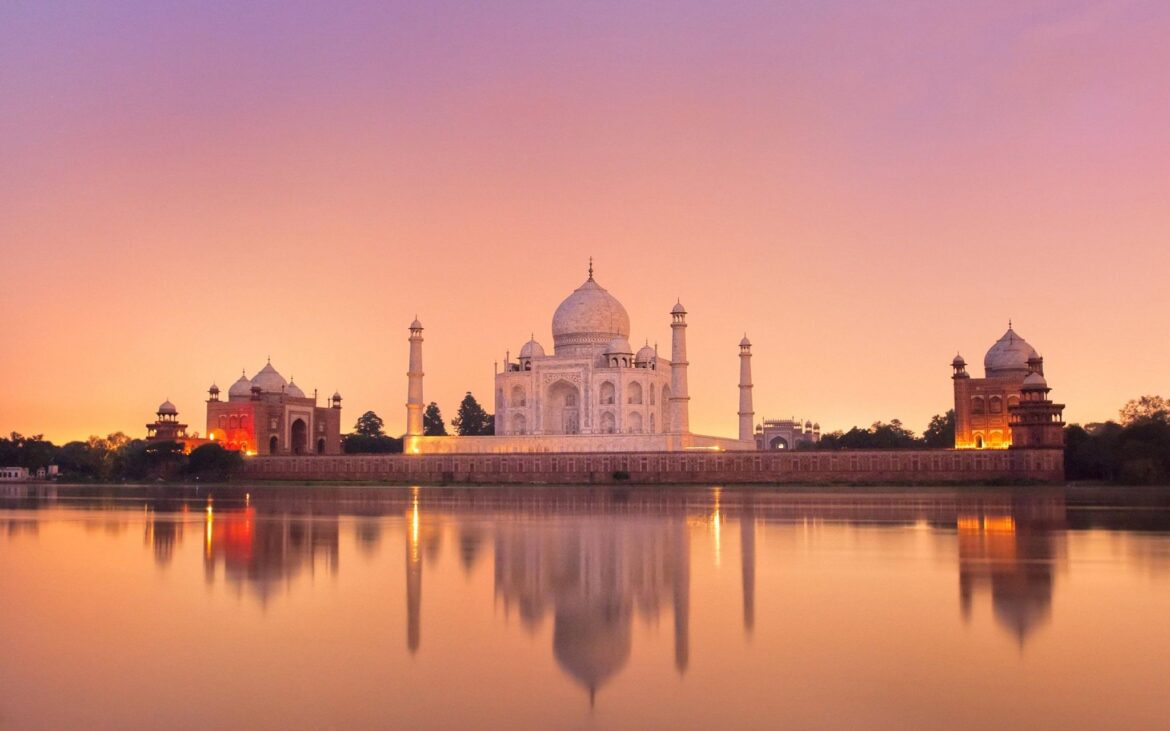Timeless Wonder: Visiting the Taj Mahal
Few monuments in the world inspire awe and admiration quite like the Taj Mahal. Standing gracefully on the banks of the Yamuna River in Agra, India, this white marble masterpiece is more than just a UNESCO World Heritage Site — it is a symbol of eternal love, an architectural marvel, and one of the most visited tourist destinations in the world. For travelers seeking beauty, history, and emotion all in one, the Taj Mahal delivers an unforgettable experience.
A Story of Love and Loss
Commissioned in 1632 by the Mughal Emperor Shah Jahan, the Taj Mahal was built in memory of his beloved wife Mumtaz Mahal, who died during childbirth. The emperor’s grief gave birth to what many consider the most beautiful building on Earth. It took over 20,000 artisans and 22 years to complete this monument, using materials sourced from across India and Central Asia — white marble from Rajasthan, turquoise from Tibet, jade from China, and lapis lazuli from Afghanistan.
The result is a structure that seems to glow in the sunlight and shimmer in the moonlight. Its perfect symmetry, delicate inlays, and stunning proportions make it one of the greatest achievements of Mughal architecture.
The Architecture and Grounds
The Taj Mahal complex includes more than just the main mausoleum. Visitors enter through a grand red sandstone gateway, which leads to an ornamental garden divided by water channels — a classic Persian-style layout symbolizing paradise. The white dome of the Taj gradually comes into view as one walks through the arch, creating a breathtaking first impression.
Flanking the central structure are two red sandstone buildings: a mosque and a guesthouse, which add balance to the layout. The mausoleum itself sits on a raised marble platform and is crowned with a large central dome surrounded by four slender minarets, designed to tilt slightly outward so they wouldn’t fall on the tomb in case of an earthquake.
Inside the mausoleum lie the cenotaphs of Shah Jahan and Mumtaz Mahal, though the actual graves are in a lower crypt, in keeping with Islamic tradition.
When to Visit
The best time to visit the Taj Mahal is during the cooler months, from October to March, when the weather is pleasant and the skies are usually clear. Sunrise and sunset are particularly magical, as the changing light gives the marble a warm, golden hue. Visiting at full moon, when night tours are available, adds a surreal glow to the monument, creating a truly ethereal atmosphere.
To avoid crowds and enjoy a more peaceful experience, it’s advisable to arrive early in the morning when the gates open.
Tickets and Entry
Tickets for foreign tourists are available at separate counters and usually include a bottle of water and shoe covers (visitors must remove or cover their shoes before entering the mausoleum). There are different fees for Indian and international visitors, and tickets can be purchased online in advance or on-site.
Note that tripods, drones, and large bags are not allowed inside the complex. Security checks are thorough, so it’s best to travel light.
Getting There
The Taj Mahal is located in Agra, a city about 230 km (143 miles) from Delhi. The fastest way to reach Agra is by train — particularly the Gatimaan Express or Shatabdi Express, which take under two hours. Buses and private taxis are also available, though they take longer. Agra also has a small airport, though most international visitors arrive via New Delhi.
While in Agra, don’t miss other historical sites like Agra Fort and Fatehpur Sikri, both UNESCO World Heritage Sites that showcase the grandeur of the Mughal Empire.
A Deeper Experience
Though the Taj Mahal is iconic and heavily photographed, nothing compares to seeing it in person. Beyond the beauty and symmetry lies a deeper emotion — the human story of love, loss, and devotion that brought it into being. For many visitors, the experience is not just about sightseeing, but about connecting to something timeless and universal.
Local guides, available in multiple languages, can enrich your visit by sharing the monument’s history, legends, and architectural secrets. Many tours also include visits to artisan workshops where traditional marble inlay work is still practiced today.
The Taj Mahal is more than just a monument; it is an enduring symbol of the power of love and the brilliance of human craftsmanship. A visit here stays in your heart long after you’ve left. Whether you’re an architecture enthusiast, a romantic, a photographer, or a curious traveler, the Taj Mahal will leave you spellbound — just as it has for centuries.


